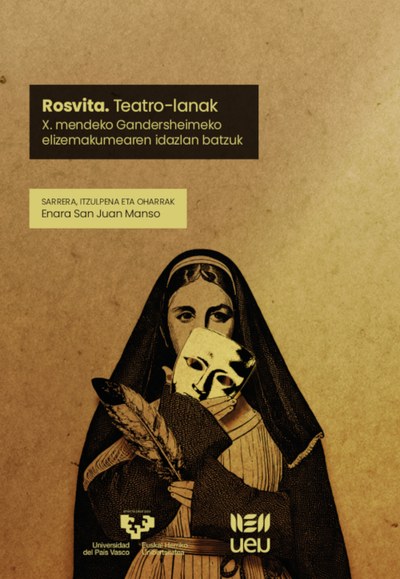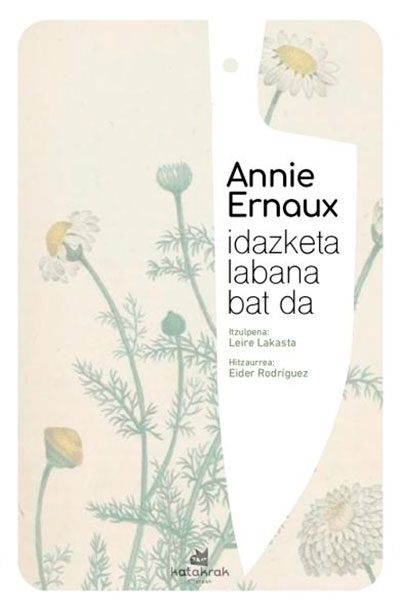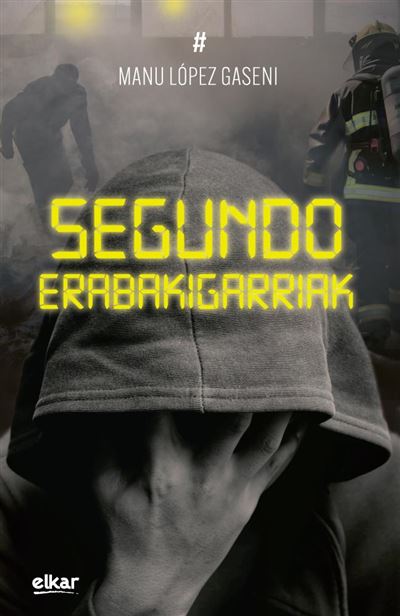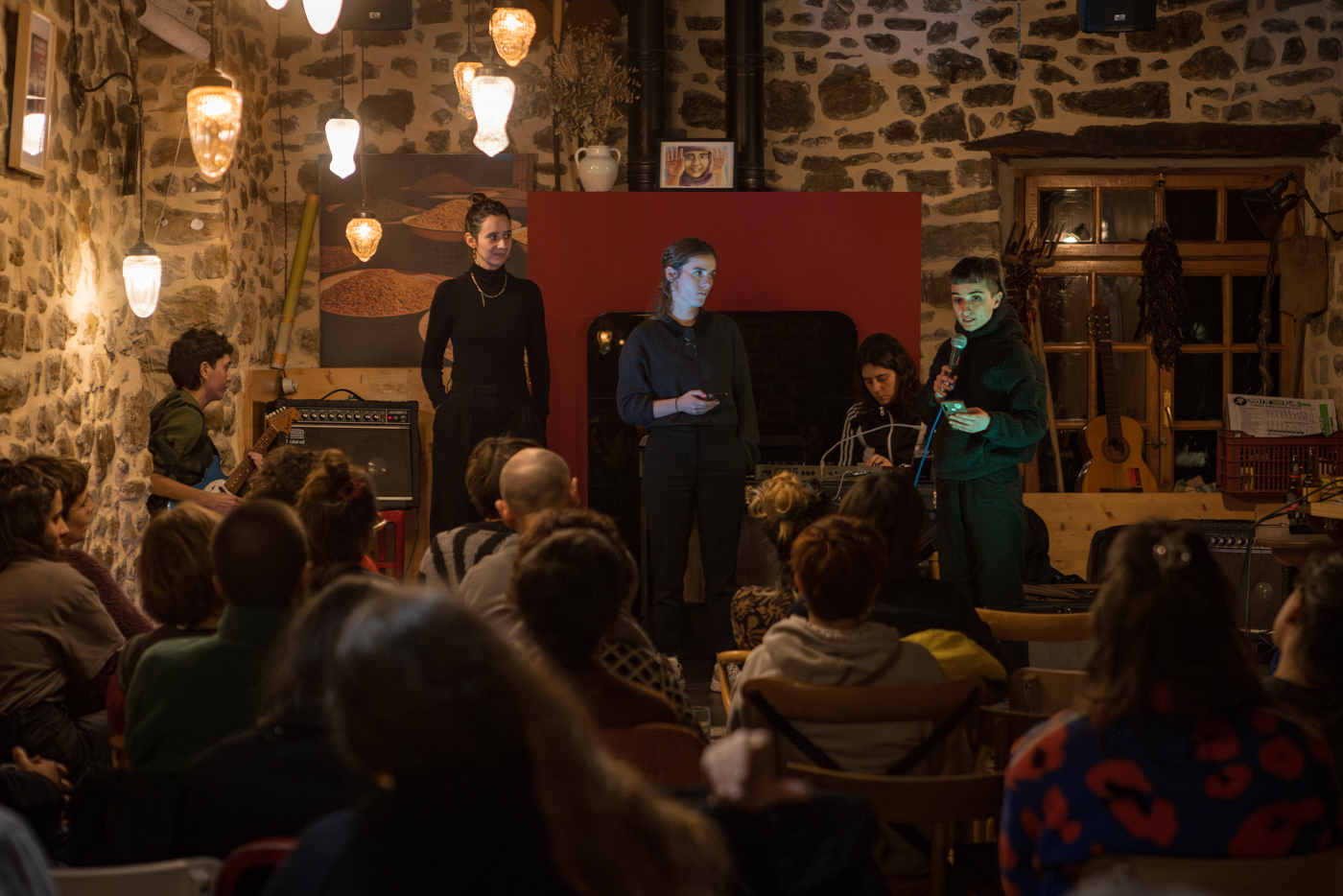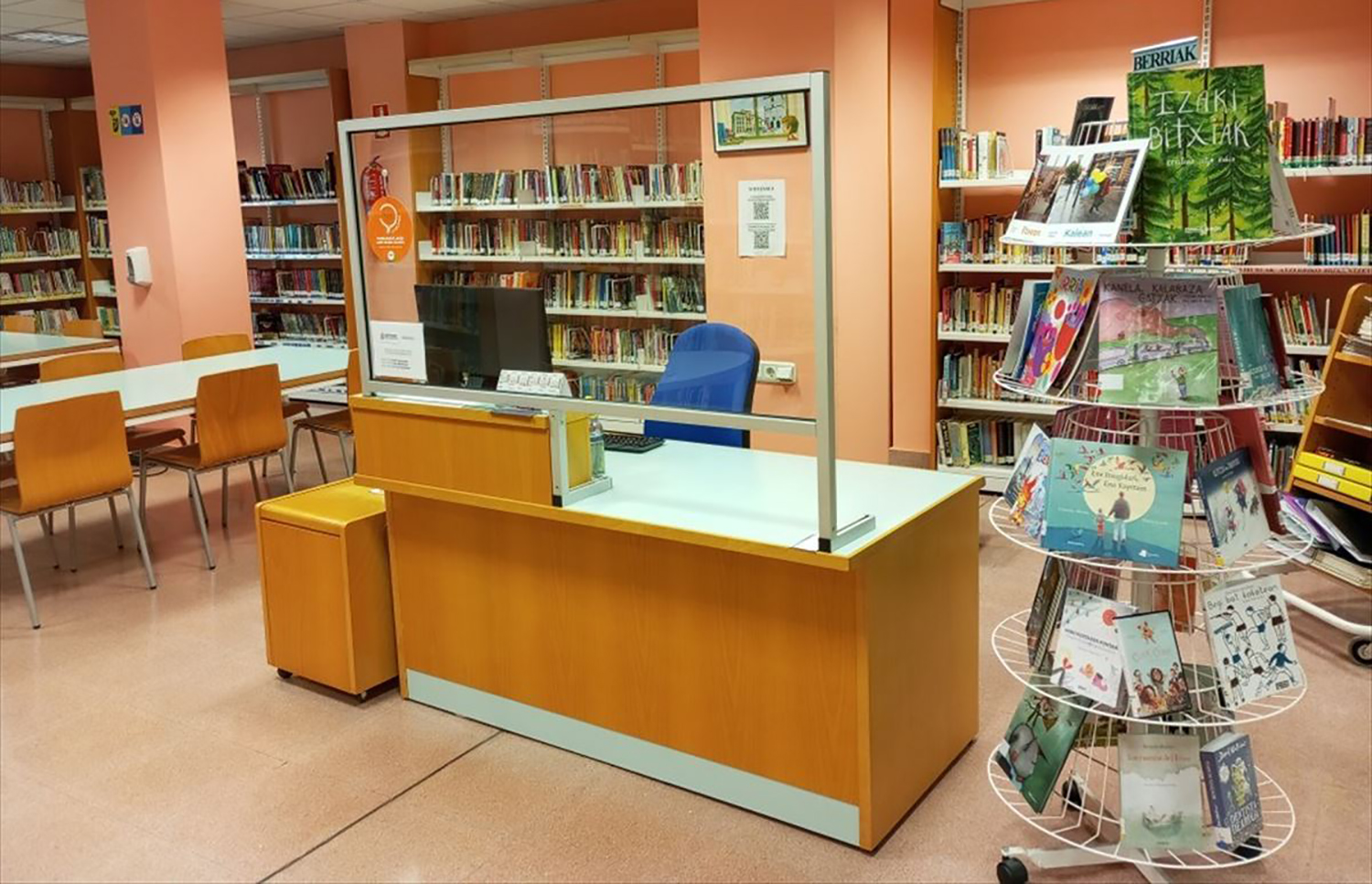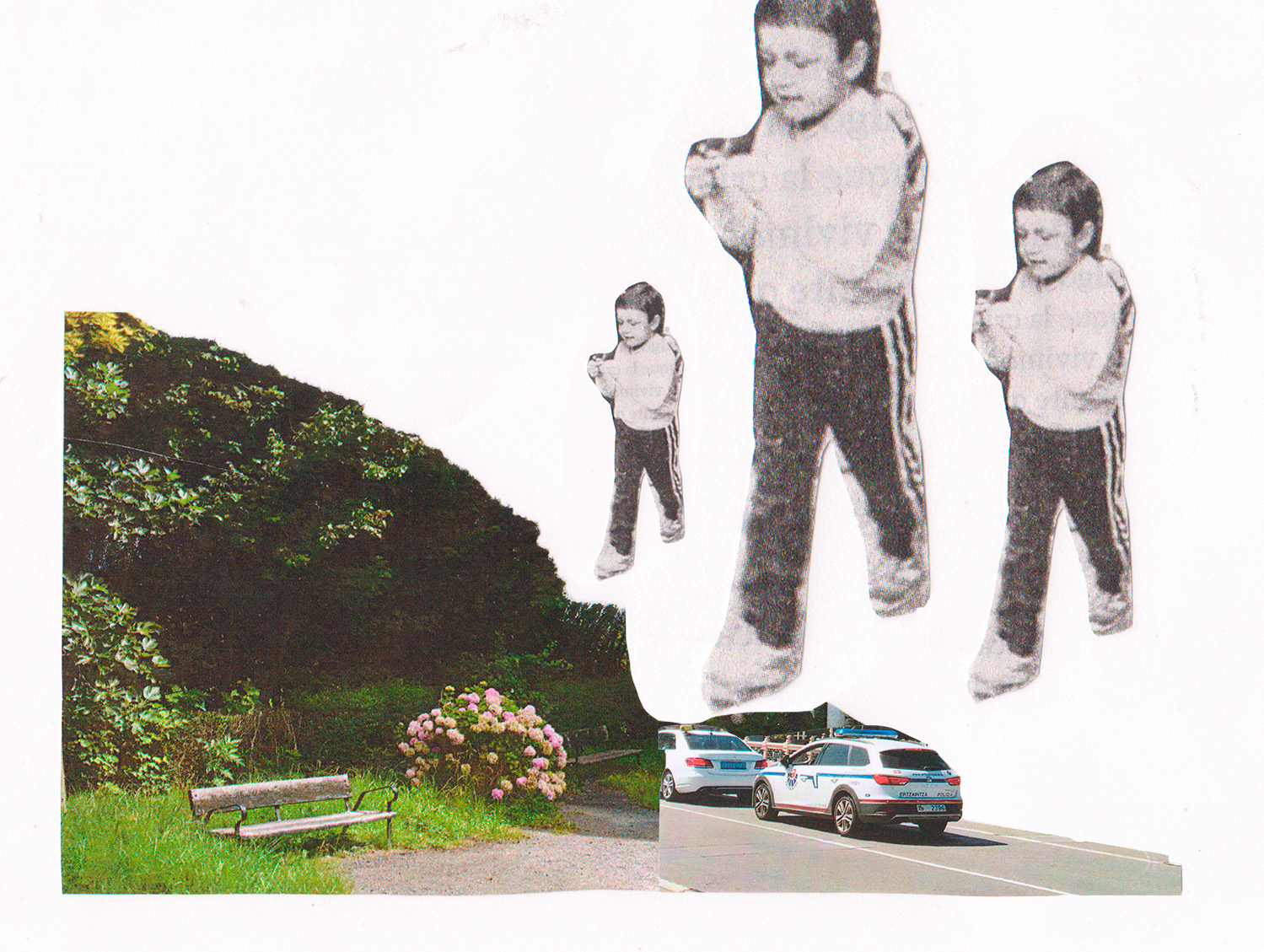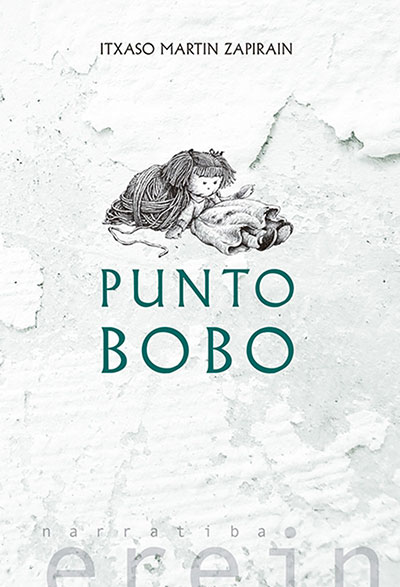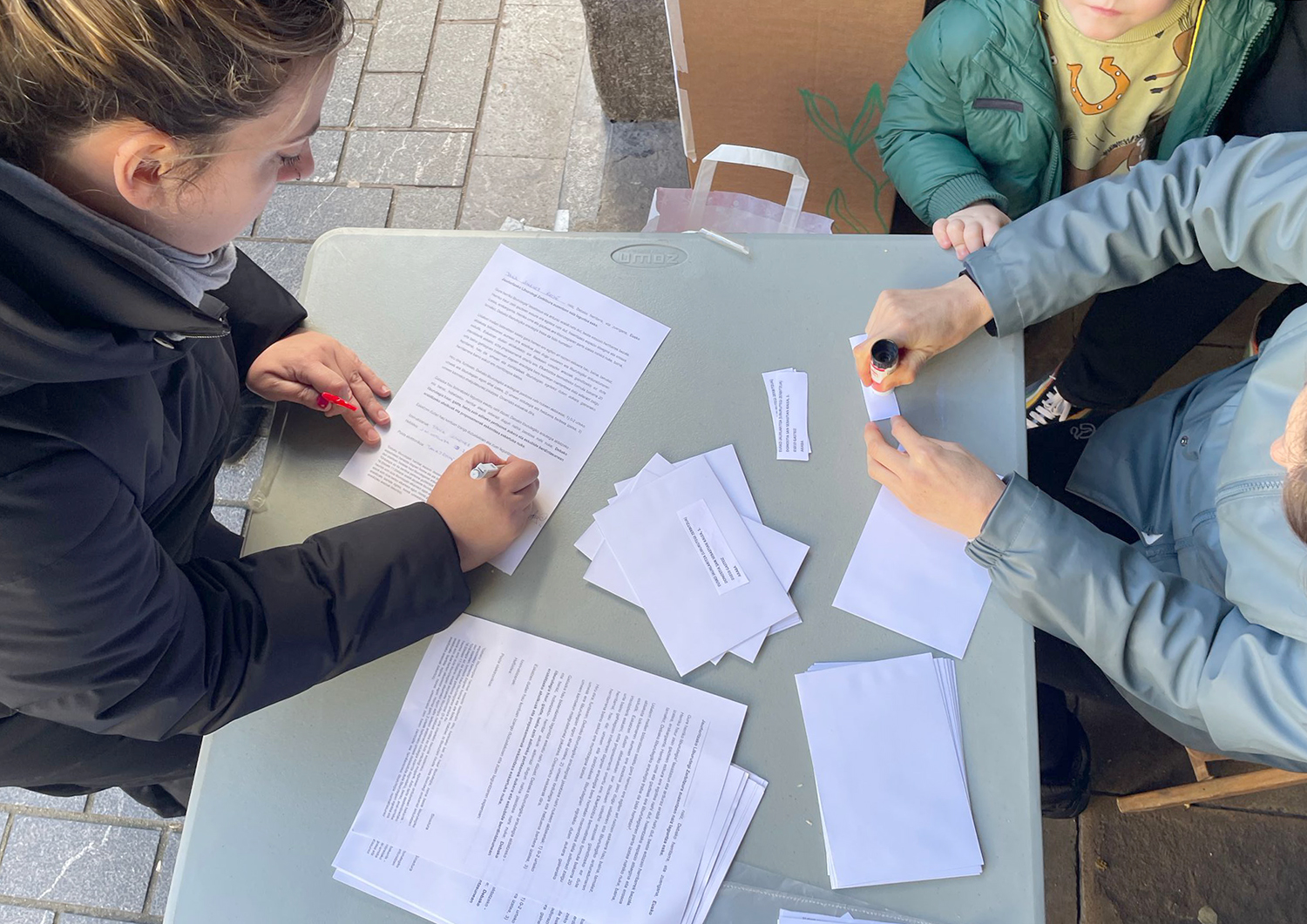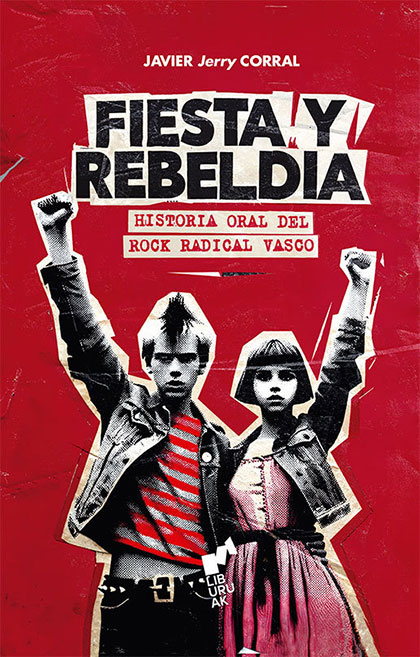The tornui that our literature deserves
- It is the work of the members of the Literary Research Commission of the Academy of the Basque Language (LIBRE). The book From the Middle Ages to the Renaissance is the first issue of the series of Anthology of Basque Literature. There are anthologies, but the authors preferred to make a new one. The studies that have been carried out so far do not reflect the interest that the Basque literature deserves. On the right track, the whole anthology is made up of four or five more parts. We talked to Karlos Otegi, Sebastian Gartzia Trujillo and Iratxe Retolaza about this collective project.
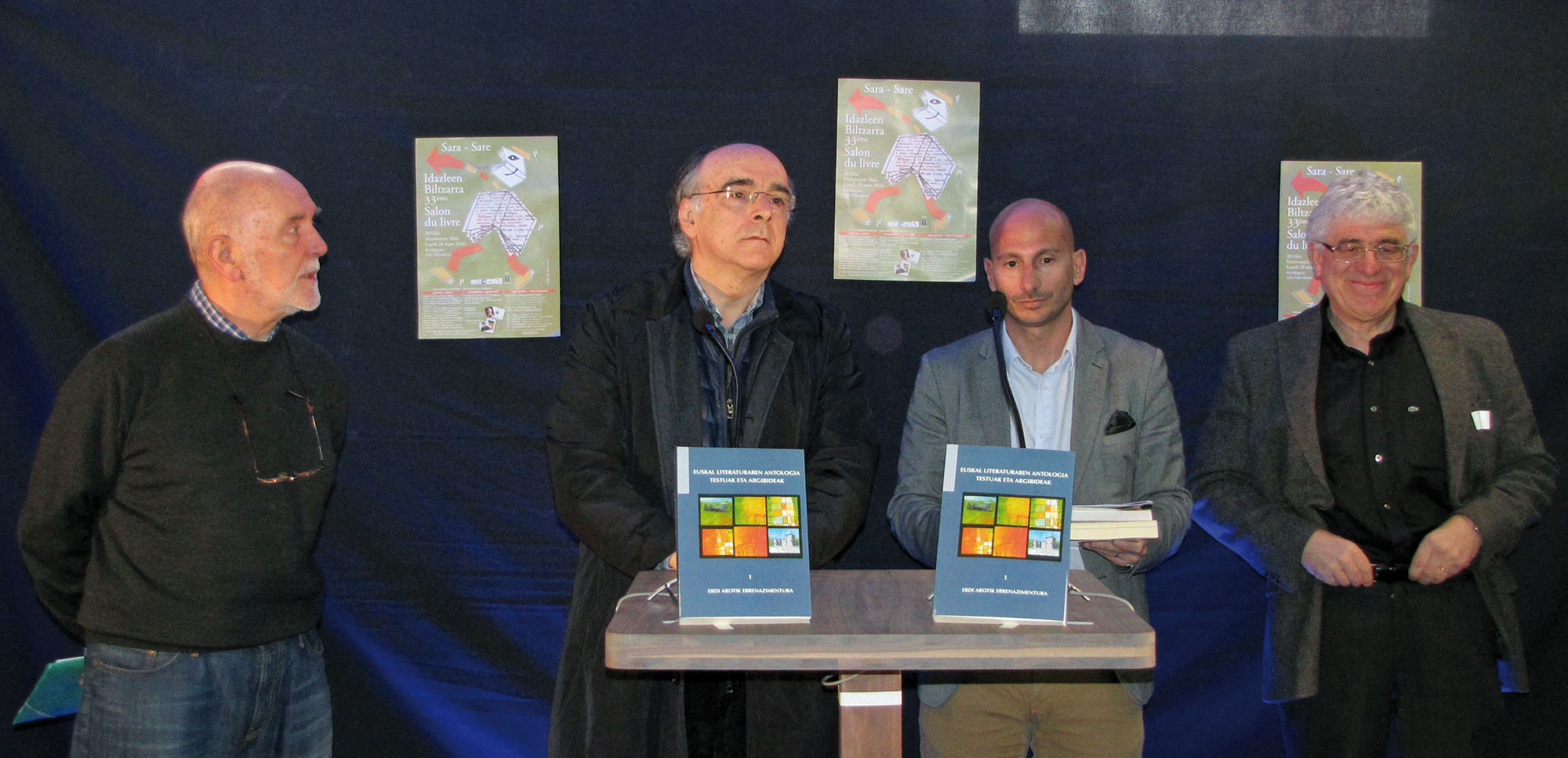
There are anthologies of Basque literature, organized by genres: poetry and novel. Antiques or modern. Are they attractive? They may be interesting, but as our interlocutors say, “they don’t offer a full view, they’re very limited.” The first issue of the new anthology – from the Middle Ages to the twenty-first century – can already be read: “Our intention has been to make a more complete anthology, we have brought more authors and texts: we have added entries, subtexts and footnotes. They are not in the unified Basque country or in the original mold, but between the two,” says Karlos Otegi. A total of eleven people have participated in the anthology. The main feature has been teamwork: “The group is very appropriate, because it brings together people from the literature of Iparralde and Hegoalde, formed and experienced,” adds Sebastian Gartzia Trujillo. In the words of Iratxe Retolaza, “this anthology is not a research work, but a high-level dissemination work. There are quite a few literary studies, but the field of teaching is not quite complete.”
The field of classical writers and texts was incomplete. Classics are in old libraries and archives, but not in modern centers, or in appropriate media. Those responsible for the new anthology have become a bridge. It comes to occupy a space between research and literature enthusiasts, considering it an ideal medium for teaching. They have taken a step further along the path of previous anthology, updated and adapted the texts.
S. García Trujillo:
“I have received many surprises in the old texts. There are more and better texts than I thought, more interesting things than I thought.”
For Gartzia Trujillo has been a great professional experience: “I have received many surprises in the old texts. Although it's my field, there are more and better texts than I thought, more interesting things than I thought. When you analyze a text, there are obstacles, but as you work it, you learn to enjoy it.” The greatest pleasure the work has given them has been that: “We facilitate the understanding of texts through information. But that’s not philosophical, they’re notes to understand the text,” Otegi said.
History stories
The Basques do not know the history of our people well. We can get to know it through these texts. For example, the discord of our relatives has come through literature: “The book, in itself, is not a history of literature, but you can learn history through these texts. History books often have a political context, but where are the living texts of their time? Literature always tells a story, we have brought good stories. We need both of them. What has happened in history is also that of stories.”
The Basques of today we think that the ancient texts, both old songs and bertsos, were the most inculcated, we have been told by the members of LIBE: “Many times we think that our old texts are poor [Gartzia Trujillo speaks], perhaps they are poor because they are not many or because they are short, but as for beauty they are wonderful, there are brave and nice metaphors. We do not know the authorship of many of these texts, but we have insisted that they were cultured people.”
Retolaza stressed that “we often neglect ourselves and the resources used in the oral literature are enormous.”
Structure of the book
The book is structured by authors and texts. If the authors have enough identity, work or quality, they have been offered a chapter. Bernat Etxepare, Joan Pérez Lazarraga and Joanes Leizarraga present sections. Therefore, section I, which includes the old Songs and Verses of the Middle Ages, is organized into genres, themes or groups. Many of these authors of ancient songs and verses are anonymous. In the design of the texts not only has the authors been taken into account, but the protagonists that appear in the texts have a prominent place in medieval literature. Moreover, the belief that ancient texts are of clergy is rather widespread, but most of the texts of that time are of civilian people. It is no coincidence that these texts were before Etxepare, preceded by the book by Etxepare Linguae Vasconum Primitiae: “The Council of Trento radically changed Basque culture. There is a document stating that the erections were prohibited. They are the expression of the culture prior to the Council of Trento, and just after, as a consequence of the cultural change, all of them were reduced,” says Retolaza.
Those responsible have drafted the texts received by historians, collected the history of the documents, and their work has consisted of placing them chronologically precisely: “Some are collected verbally, you can often check the date of the text around the event, but we have had to be very careful,” they told us.
Limit of the Council of Trento
In Etxepare’s work there is a worldview before Trento. Being a priest, it's significant how he's written about wives and sexes. These 16th-century poems were then rationalized: “The Council of Trento had a poor influence on the vision proposed by Etxepare. His work was published, but right at the time of cultural change.” The author of the first book published in Euskera, Linguae Vasconum Primitiae, reflected in his work another vision of culture. This anthology has received, among others, the poems Emtzen fabore of Etxepare and Lucha de Amoros, which have been translated into Spanish. Etxepare Bernard Leheteri's letters open chapter II.
Iratxe Retolaza:
“The Council of Trento had a poor influence on the vision proposed by Etxepare. His work was published, but right at the time of cultural change.”
Chapter III is dedicated to Joan Pérez Lazarraga. Lazarraga was noble and Basque: “XV. and in the 16th century Legió n.En the 15th and 16th centuries, the Basque language was also a noble language. Nowadays, the Basque language of that time is considered as the language of the poor and the peasants, but no, it is also the language of the noble in those centuries, the texts are written by cultured people. Most of these old texts are from the west and from Navarra,” said Gartzia Trijullo and Otegi. Paradoxically, the least texts are from Gipuzkoa.
As a curiosity, the I.Los texts of María Estibaliz Sasiola and the song of Perutxo were found among the texts of Lazarraga: “Patri Urkizu described them as texts by Estibalitz de Sasiola, as Urkizu himself points out in his article. When the authors do not have significant weight, they have adapted them in the section of text groups. However, the texts of Sasiola are the finding of a historical situation, the result of the first female writers testuak.Egiari, if not, it is not entirely true until recently, as Bixenta Mogel is considered the first female writer. However, we have considered these texts as created by Sasiola.” In the words of the interlocutors, there is still something to investigate for that.
Elderly relatives
History comes to us through confrontations starring people. Euskaldunes are not different from those of other countries. The texts of the Middle Ages refer above all to conflicts, including texts of love, both here and in Spain and in Europe: “These appear in the first chapter, then come the authors of the time of the kings. Starting with Etxepare, then Leizarraga. This had to do with the Juana de Albret.” Kings helped print the manuscripts. However, Lazarraga’s work is a manuscript, without publication, it was not printed”.
Paragraph V is an exception, belongs to Leizarraga, which are the translations of texts: In addition to the texts of Joana de Albret and Euskaldunes, there are fragments of the Gospels and the Revelation: “The topic was very much discussed. 'Do we have to introduce the translations into the Anthology of Basque Literature? '. We tapped in the doubt. Given that the translations are tremendous, Anjel Lertxundi has acknowledged that this is a fundamental work. Along with books created in Euskera or published for the first time, Leizarraga has been an exception, offering a linguistic model.”
The Letters and Paremies are adapted in paragraphs V and VI. The letters are from Bertrand Etxauz and Mrs de Urtubia. The manuscripts of Etxauze are found in the National Library of Paris and those of Urtubia in Simancas (Salamanca). The paremies are the Refranes and Judgments (1596) of Esteban Garibay. Paremias, adagios, axioms and sayings are in Spanish: “Are the letters and the like literature?” There was also a discussion: “Yes and no. However, we decided to include these two paragraphs.” In the words of the interlocutors, the letters have been written in Basque, although they have been written in two languages. “Some are clear in Basque, others are uncertain, first in Spanish and then in Basque. There are many translations, rather than translations. These are verbal proverbs, which are received, on one occasion, in Basque and on the other in Spanish. Therefore, it is not known in which language they are created.”
Karlos Otegi:
“Do we have to introduce the translations into the Anthology of Basque Literature? With a yes we hit uncertainty”
The sayings were considered at that time as a literary genre, unlike the letters. Although at that time they were not considered as such, today they have become very significant, since these historical people chose Euskera and cultivated rhetoric: “R. According to M. de Azkue, [in the words of Gartzia Trujillo] in the sixteenth century letters were written in Basque, some of them of a commercial character and very well written. There are also letters of espionage and war.”
“People say [Retolaza and Otegi speak] that our literature is weak, but always because it compares to Spanish, English, German or French. But you can't compare it. No speakers in size and extension, neither Portuguese nor Catalan. The then Basque literature must be compared with that of Albania or Estonia. These texts are the best of the time, as they are historically very representative. In addition, it is not only what we have taken since today as a literary text, but the book is made in the course of history.” According to Gartzia Trujillo “the problem is not that of language or speakers, we have good people in literature, but we have not had a university or an institution. We have not had the right conditions to receive a more prosperous literature.”
Culture still needs economic resources. This anthology is a far-reaching project, and the first issue has had a special relevance. According to the interlocutors, when we talk about our culture, we tend to consider the works of 20-40 years ago as classic: “We have to take into account those of today, but it is convenient to know which lines and literary genres were worked by the old authors. As if it were not enough, to know the influence of its characteristics on current literature. To get to know the literature of the 80’s of the last century, it is necessary to know the literature of the previous ones, since these authors have resorted to the roots of those of then”.
Interrupted transmission
Interrupted transmission. Nowadays, much importance is given to this and not to this. Otegi, Gartzia Trujillo and Retolaza have stressed that the book is teamwork: “We’ve all made the selection. In the book I [Gartzia Trujillo] have worked with Iratxe in the first part, but we have not done it alone, the criteria and the main characteristics have been agreed among all, the opinion has been of all. The book has been very controversial.” According to Otegi, “the main debate has focused on the choice of texts, on adaptation. For example, H yes or no. Get up here and there. It has been decided by the majority.”
Discussions have been so intense that discussions were held between the “author” and “responsible” of the sections: “We are not the authors of these texts, we are the authors of the entries and of the observations, so it is best to say that we are the ones responsible.”
Rosvita. Teatro-lanak
Enara San Juan Manso
UEU / EHU, 2024
Enara San Juanek UEUrekin latinetik euskarara ekarri ditu X. mendeko moja alemana zen Rosvitaren teatro-lanak. Gandersheimeko abadian bizi zen idazlea zen... [+]
Idazketa labana bat da
Annie Ernaux
Itzulpena: Leire Lakasta
Katakrak, 2024
Decisive seconds
Manu López Gaseni
Beste, 2024
--------------------------------------------------
You start reading this short novel and you feel trapped, and in that it has to do with the intense and fast pace set by the writer. In the first ten pages we will find out... [+]
Istorioetan murgildu eta munduak eraikitzea gustuko du Iosune de Goñi García argazkilari, idazle eta itzultzaileak (Burlata, Nafarroa, 1993). Zaurietatik, gorputzetik eta minetik sortzen du askotan. Desgaitua eta gaixo kronikoa da, eta artea erabiltzen du... [+]
When the dragon swallowed the
sun Aksinja Kermauner
Alberdania, 2024
-------------------------------------------------------
Dozens of books have been written by Slovenian writer Aksinja Kermauner. This is the first published in Basque, translated by Patxi Zubizarreta... [+]
Sometimes I don't know if it's too much. That we're eating a pipe, that we're talking about anything else, that we're bringing it up. We like to speak aloud, to leave almost no pause, to cover the voices, to throw a bigger one. Talk about each one of them, each one of them, what we... [+]
Puntobobo
Itxaso Martin Zapirain
Sowing, 2024
----------------------------------------------------
The title and cover image (Puntobobo, Wool Bite and Rag Doll) will suggest mental health, making the point and childhood, but more patches will be rolled up as the book... [+]
Party and recreation. Oral History of Rock Radical Vasco
Javier 'Jerry' Corral
Books, 2025
------------------------------------------------
Javier Corral ‘Jerry’ was a student of the first Journalism Promotion of the UPV, along with many other well-known names who have... [+]
Itsasoa bete urre
Dani Martirena
Irudiak: Ana Ibañez
Txalaparta, 2022
--------------------------------------------
Liburu honetara barneratzen den irakurleak sentsazio ugari izango ditu. Deigarria da azaleko letren urre kolorea eta zuritasuna, goialdean ageri den... [+]











